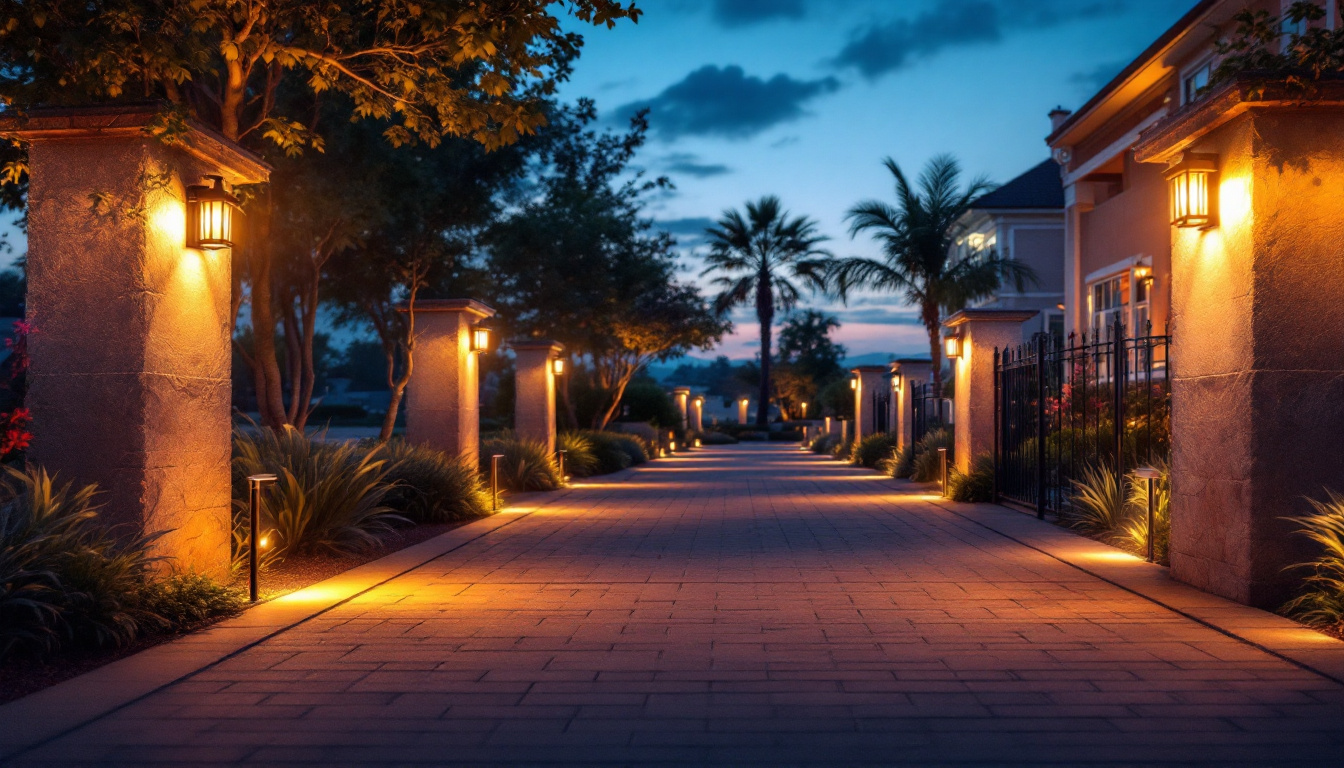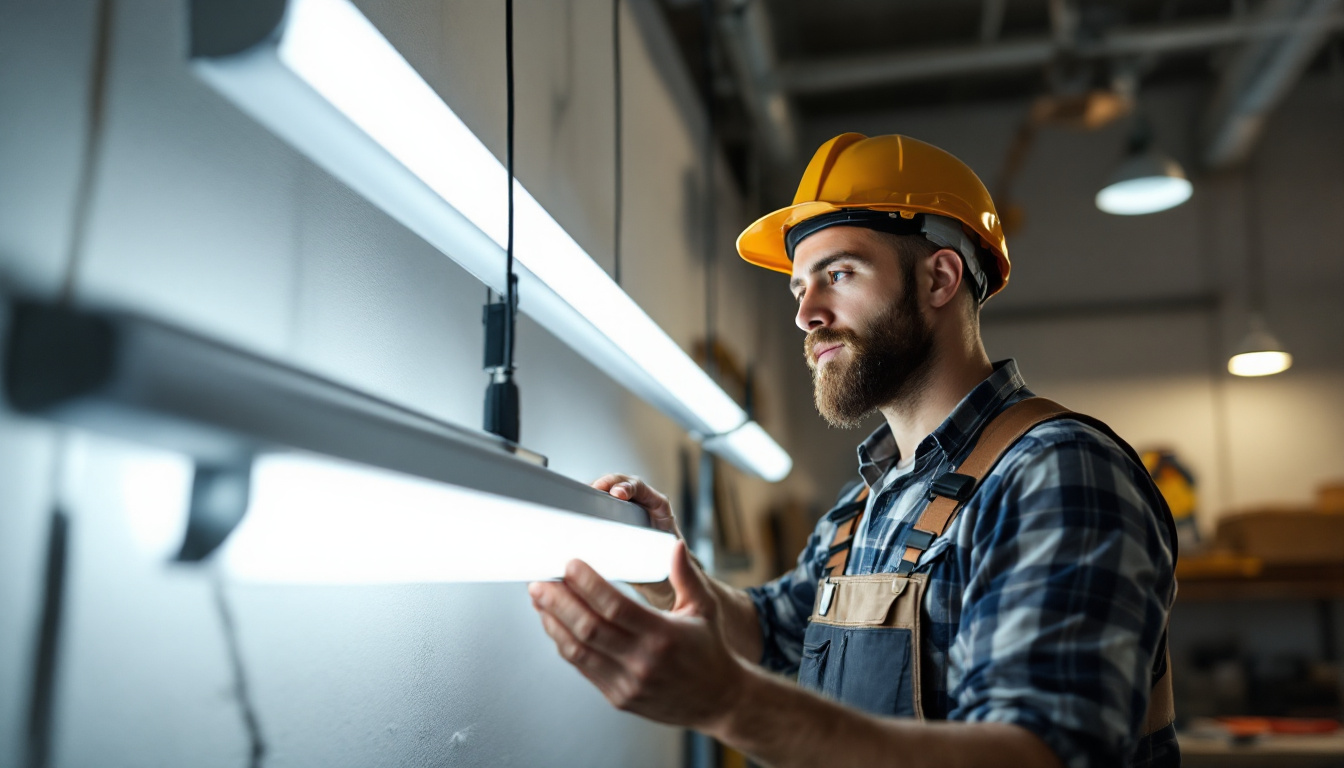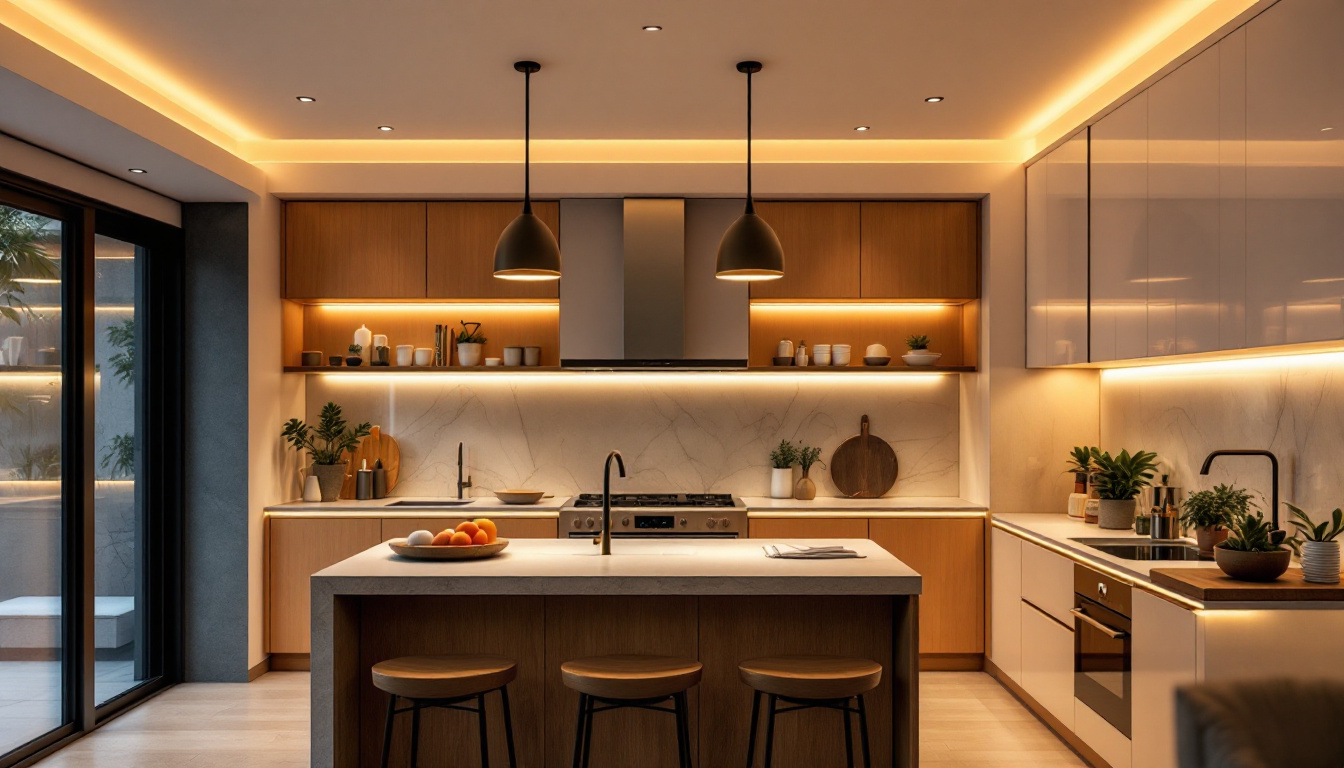

Outdoor Walkway Lighting: How to Avoid Costly Mistakes in Lighting Projects
Outdoor walkway lighting is an essential aspect of any landscape design, enhancing both safety and aesthetics. However, lighting projects can quickly become costly if mistakes are made during planning and execution. This article aims to guide lighting contractors through common pitfalls and provide insights on how to avoid them, ensuring successful and cost-effective projects.
Planning is the cornerstone of any successful lighting project. Without a well-thought-out plan, even the most experienced contractors can find themselves facing unexpected challenges. Proper planning involves understanding the client’s needs, the environment, and the technical aspects of lighting design.
Every project begins with a conversation. Engaging with clients to understand their vision, preferences, and budget is crucial. Questions about the intended use of the walkway, desired ambiance, and specific features they want to highlight will help shape the project. Documenting these requirements ensures that the final outcome aligns with client expectations. Additionally, it can be beneficial to present clients with visual aids, such as mood boards or lighting simulations, to help them articulate their preferences more clearly. This collaborative approach not only fosters a stronger client-contractor relationship but also minimizes the risk of miscommunication and dissatisfaction later in the project.
The physical environment plays a significant role in the effectiveness of outdoor lighting. Factors such as the layout of the walkway, surrounding vegetation, and existing structures must be considered. Conducting a thorough site analysis helps identify potential challenges, such as shadows cast by trees or buildings, which can affect the overall lighting design. Moreover, understanding the local climate and weather patterns is essential, as these can influence the durability and longevity of lighting fixtures. For example, areas prone to heavy rainfall may require waterproof fixtures, while locations with high winds might need more secure mounting options. By taking these environmental factors into account, contractors can create a lighting plan that not only enhances aesthetics but also stands the test of time.
Technical aspects, including the type of fixtures, wattage, and placement, are critical in achieving the desired lighting effect. Contractors should be well-versed in different lighting technologies, such as LED, halogen, and solar options. Each type has its advantages and disadvantages, influencing both energy consumption and maintenance costs. Furthermore, understanding the color temperature of lighting can significantly impact the mood of the space; warmer tones can create an inviting atmosphere, while cooler tones may lend a more modern or clinical feel. It’s also worth considering the integration of smart lighting systems, which allow for greater control over brightness and color, enabling clients to customize their lighting based on different occasions or times of day. This level of sophistication not only enhances user experience but also promotes energy efficiency, aligning with contemporary sustainability goals.
Fixture selection is a pivotal element in outdoor walkway lighting projects. The right fixtures not only enhance the aesthetic appeal but also ensure functionality and longevity. Contractors must consider various factors when choosing the appropriate fixtures for a project. This includes the specific needs of the space, the desired ambiance, and the overall design theme of the property. A well-thought-out selection process can transform a simple walkway into a stunning visual pathway that guides guests safely and beautifully.
There are several types of fixtures available for outdoor walkway lighting, including path lights, wall-mounted lights, and recessed lighting. Path lights are ideal for illuminating walkways, while wall-mounted fixtures can enhance the architectural features of nearby structures. Recessed lighting, although less common, can provide a sleek and modern look. Additionally, solar-powered fixtures are gaining popularity for their ease of installation and minimal energy costs. These fixtures harness sunlight during the day and provide illumination at night, making them an eco-friendly option that reduces reliance on traditional power sources.
Given that outdoor fixtures are exposed to various weather conditions, durability is a key consideration. Selecting fixtures made from weather-resistant materials, such as stainless steel or high-grade plastic, can prevent premature wear and tear. Additionally, ensuring that fixtures are rated for outdoor use will help avoid costly replacements down the line. It’s also wise to consider the finish of the fixtures; powder-coated finishes can offer an extra layer of protection against rust and corrosion, ensuring that the fixtures maintain their appearance and functionality over time. Regular maintenance, such as cleaning and inspections, can further extend the life of the lighting installations.
In today’s environmentally conscious world, energy efficiency is a significant concern. LED fixtures are often the best choice for outdoor lighting due to their low energy consumption and long lifespan. Educating clients on the benefits of energy-efficient lighting can also enhance their satisfaction with the project. Furthermore, integrating smart lighting technology can provide added convenience and efficiency. Smart fixtures can be programmed to adjust brightness based on the time of day or occupancy, allowing for optimal energy use while maintaining safety and visibility. This innovative approach not only reduces energy bills but also aligns with modern sustainability practices, making it a compelling selling point for any outdoor lighting project.
Effective lighting design goes beyond mere functionality; it creates an inviting atmosphere while ensuring safety. Understanding key lighting design principles can help contractors achieve a balanced and aesthetically pleasing result.
Layering light involves using different types of lighting to create depth and dimension. This technique can be achieved by combining ambient, task, and accent lighting. Ambient lighting provides general illumination, task lighting focuses on specific areas, and accent lighting highlights architectural features or landscaping elements.
It is crucial to consider the intensity of light levels for different areas of the walkway. Too much light can create glare and discomfort, while too little can lead to safety hazards. A well-designed lighting plan should balance brightness levels, ensuring that walkways are adequately illuminated while maintaining a comfortable atmosphere.
The color temperature of the light can significantly affect the mood of the space. Warmer color temperatures (around 2700K to 3000K) create a cozy and inviting environment, while cooler temperatures (above 4000K) can feel more sterile and harsh. Understanding the desired ambiance will guide the selection of appropriate fixtures and bulbs.
Even with a solid plan and design, installation can present challenges. Being prepared for potential issues can save time and money during the project. Here are some common installation challenges and their solutions.
Before digging for fixture installation, it is essential to locate any underground utilities. Striking a utility line can lead to costly repairs and project delays. Utilizing utility locating services or consulting local utility companies can help avoid this issue. Additionally, using above-ground solutions where possible can mitigate risks.
Proper wiring and connections are crucial for the longevity and safety of the lighting system. Using high-quality, weather-resistant wiring and connectors can prevent issues such as short circuits and corrosion. Ensuring that all connections are secure and protected from moisture will help maintain the integrity of the system.
Once the installation is complete, thorough testing is essential. Walking the pathway at night to evaluate light levels and fixture placement can reveal any necessary adjustments. This step is often overlooked but is vital for ensuring that the lighting meets the client’s expectations and safety standards.
After the installation is complete, ongoing maintenance is crucial for the longevity of the lighting system. A well-maintained system not only functions better but also enhances the overall aesthetic of the property.
Conducting regular inspections of the lighting system can help identify potential issues before they become significant problems. Checking for burnt-out bulbs, damaged fixtures, and signs of corrosion will ensure that the system remains functional and visually appealing. Establishing a maintenance schedule can help streamline this process.
Outdoor fixtures can accumulate dirt, debris, and even algae over time, which can diminish their effectiveness. Regular cleaning of fixtures will enhance light output and maintain the overall appearance of the lighting system. Using non-abrasive cleaners and soft cloths can prevent damage to the fixtures while ensuring they remain in top condition.
As technology evolves, upgrading lighting systems can lead to improved efficiency and functionality. Staying informed about the latest advancements in lighting technology can provide opportunities for clients to enhance their systems, such as integrating smart controls or energy-efficient fixtures.
Educating clients about their lighting systems is an often-overlooked aspect of the project. Providing clear communication and guidance can enhance client satisfaction and reduce the likelihood of misunderstandings.
Clients should be informed about how their lighting system works, including the operation of timers, sensors, and dimmers. Providing a tutorial during the final walkthrough can empower clients to make the most of their new lighting system. This education can lead to greater appreciation and satisfaction with the project.
Setting realistic expectations regarding maintenance, energy costs, and performance is crucial. Clients should understand that while outdoor lighting enhances safety and aesthetics, it also requires ongoing care and can incur operational costs. Clear communication about these aspects can prevent future frustrations.
Encouraging client feedback after project completion can provide valuable insights for future projects. Understanding their experience, satisfaction levels, and any concerns can help contractors improve their processes and offerings. This feedback loop can foster long-term relationships and enhance the contractor’s reputation.
Outdoor walkway lighting projects can significantly enhance the safety and beauty of a property when executed correctly. By avoiding common mistakes and focusing on proper planning, fixture selection, installation, and maintenance, lighting contractors can ensure successful outcomes. Education and communication with clients further enhance satisfaction and foster lasting relationships. By adhering to these principles, contractors can navigate the complexities of outdoor lighting projects with confidence and skill.
Ready to elevate your outdoor walkway lighting projects with the finest products on the market? Look no further than LumenWholesale, where we provide contractors with exceptional, spec-grade lighting solutions at unparalleled wholesale prices. Say goodbye to local distributor markups and hello to a vast selection of industry-standard lighting that promises reliability and high performance. With free shipping on bulk orders, LumenWholesale is your go-to source for premium lighting without the hidden costs. Don’t compromise on quality or value—Wholesale Lighting at the Best Value is just a click away. Make your next project shine with LumenWholesale.

Discover why purchasing wrap lighting fixtures in bulk from local distributors might not be the best choice.

Discover why staying informed about T8 light fixtures is crucial for every lighting contractor.

Discover why lighting contractors should prioritize kitchen recessed lighting in their projects.

Discover the innovative strategies lighting contractors use to maximize efficiency with high bay LED lights boasting 30,000 lumens.
Get notified when NEW deals are released.
Optimize your budget with wholesale discounts.
Only top-quality, specification-grade lighting products.
No additional costs at checkout - what you see is what you pay.
We understand the unique needs of contractors.